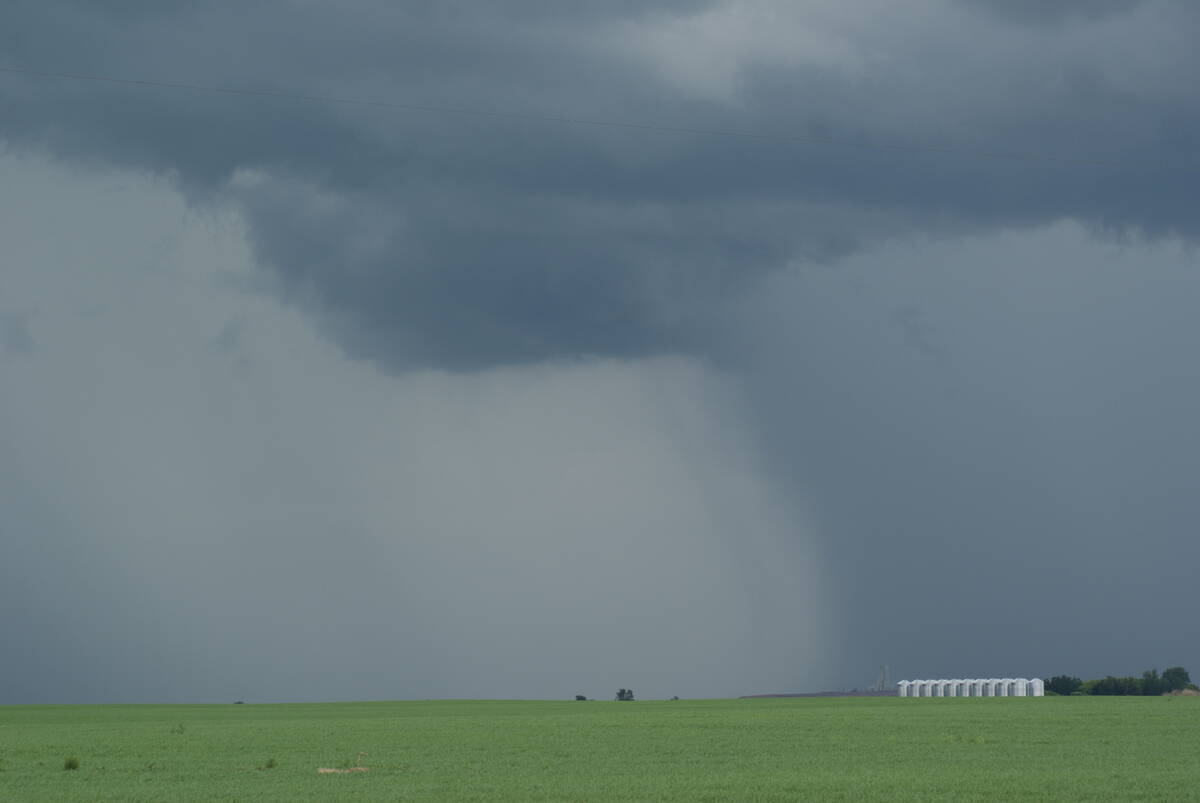 The bus tour wound its way through foothills and valleys at the base of Montana’s scenic mountains near Bozeman. Dust from its passage on the gravel road hung in the air, lightly coating roadside prairie grasses and wildflowers.
The bus tour wound its way through foothills and valleys at the base of Montana’s scenic mountains near Bozeman. Dust from its passage on the gravel road hung in the air, lightly coating roadside prairie grasses and wildflowers.
After several miles of soporific lumbering, the group was lulled into near silence, awed by the scenery and enjoying the ride.
Then the buses mounted a rise and there, on the other side, were 3,500 bison.
Read Also

Canadian farmers need new tools to support on-farm innovation
Farmers need a risk management buffer that actually works and investment that drives advancements forward if Canada is to build resilience.
Welcome to the Flying D, one of Ted Turner’s 14 bison ranches in the United States.
The herd of about 4,200 bison on this particular 113,000 acre ranch (185 sq. miles) generally separate themselves into “family” groups of 150 to 200 animals, but ranch managers had orchestrated this special en masse bison sighting for the benefit of participants in the National Bison Association convention held in nearby Big Sky.
Turner is the world’s largest bison rancher. In bison circles, they simply mention “Ted” and everybody knows who they’re talking about.
Russ Miller, general manager of Turner Enterprises Inc., was a gracious host. Ranch manager Danny Johnson and bison manager Todd Traucht answered questions about the ranch and the herd, never losing patience when the same questions were asked repeatedly.
How many bison are in this herd? (4,200 plus calves)
How big is this ranch? (113,000 acres)
How many employees? (8 full time)
How do you herd the bison? (with ATVs)
How do you process them? (special facilities, once a year, over a period of about six weeks)
What’s the predation rate? (a resident wolf pack killed 25 bison in all of 2010 up to the present)
Do you wean? (no)
Do you tag? (yes)
What’s the cow to bull ratio? (12:1)
It’s striking to see such a vast amount of ranched land with virtually no fences. In fact, there are about 11 pastures, ranging from 8,000 to 18,000 acres. To observers, it looks as though the bison roam free, as they did in historic times past.
Somehow it does a heart good to see it.
Logistics require some containment, and a four to six strand smooth wire fence does that job. When it is time to move the bison, “it takes as long as the bison want it to take,” quipped Miller. Slow and gentle urging works best, and it takes about two days to get the herd from one side of the ranch to the other.
I have more to tell about the Flying D and its bison. When this postal strike is over and your Producer is once again in your mailbox, you can read all about it.














